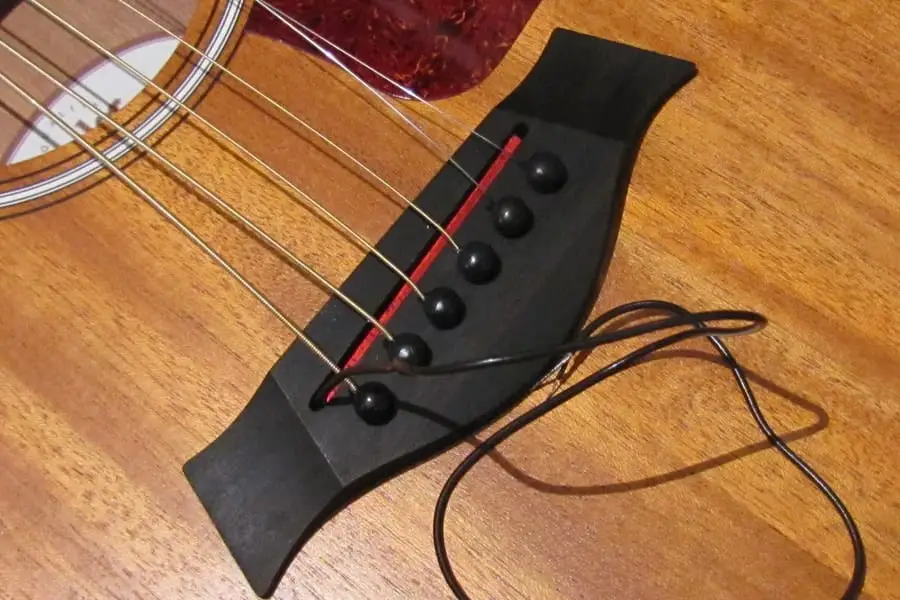*If you click a link on this page and make a purchase, we may receive a small commission at no extra cost to you. Learn more
Getting the best sound from your guitar sometimes requires a little help.
If you love your acoustic guitar and want more sound, or want to amplify your sound, you need to find a way to convert the sound created by the strings of your instrument, into an electrical signal that can be sent to your amp.
This is easily accomplished on an electric guitar that uses metal strings. However, when it comes to playing an acoustic guitar that uses nylon strings, this can be a completely different challenge, all together. The answer for amplifying the sound of your acoustic guitar (and your electric guitar too) is the piezo pickup.
The piezo pickup is built into the bridge of your guitar, and is a great way to add volume to your acoustic guitar.
It’s also a great way to create a more acoustic-type sound to your electric guitar. Active and passive pickups are a great way to amplify the sound of your guitar.
Using a piezo pickup is a great solution for any guitarist that wants more from their guitar, without having to make a ton of modifications, or spend a ton of money.
Contents
How do piezo pickups work?
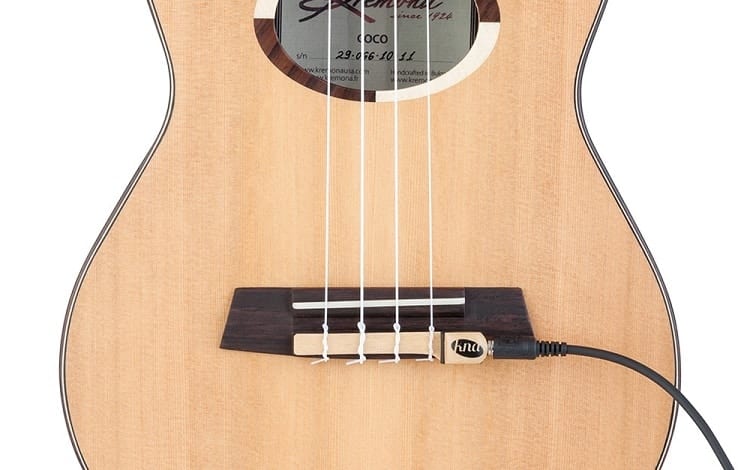
Before we start breaking down some of the fine details about using a piezo pickup on your guitar, it is important that we share with you how they work.
Piezo pickups are a nice alternative to traditional magnetic pickups, for your electric guitar and a must have for your acoustic guitar, or other stringed instruments such as fiddles, standup bass and banjo.
Let’s start with the basic science of all pickups, before we delve directly into piezo pickups. Pickups work much like a microphone. Their purpose is to take the subtle sounds made by the strings of your guitar and make that sound bigger.
Pickups are generally built directly into your electric guitar, but are an option that can also be added to your acoustic guitar. Most pickups use magnets, convert the vibrations made by the strings of your guitar, into an electrical signal.
This signal is converted by the preamp or amp back into sound that can be heard or is louder.
Piezo or piezo-electric (the full name) pickups work slightly different than a magnetic pickup. Instead of using a magnet to create an electrical signal, piezo pickups use crystals to create the electric signal necessary for amplifying the sound from your guitar.
The use of crystals make it possible to amplify or “pickup” the sound from acoustic instruments, which typically use nylon strings instead of metal. The piezo pickup uses the pressure from the strings to create the electric current instead of creating current through vibrations on magnets.
The advantage here is that piezo pickups are a natural fit for acoustic instruments.
Another difference between piezo pickups and magnetic pickups is that they are added to the bridge of the guitar. While magnetic pickups are built into the guitar, piezo pick-ups are set into the bridge. They can be added after the fact and can be changed as you upgrade or look for different sounds.
Do piezo pickups need preamp?
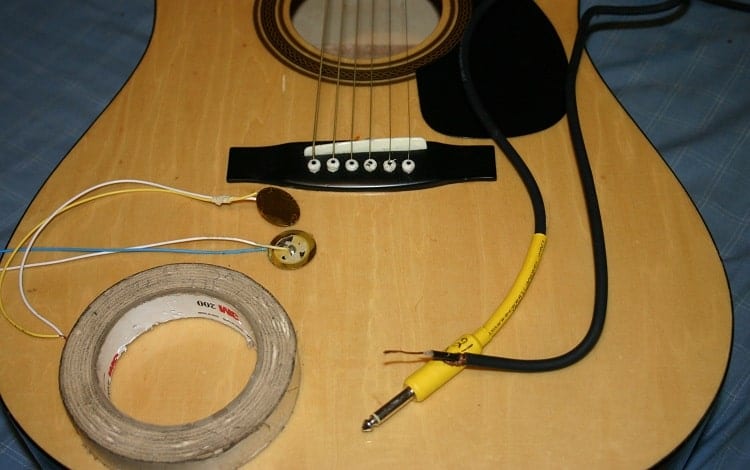
The use of a preamp with your pickup is really dependent on the type of instrument that you are putting it on, and what kind of sound you are looking for.
If you are using a piezo pickup on your electric guitar, you generally don’t need to use preamp to boost the sound. The pickup will work directly with the electronics already built into the guitar.
However, some guitarists feel that the sound created with a piezo pickups on an electric guitar can sound buzzy or static. If this is the case with your electric guitar, you will want to add preamp before the amp to smooth out the sound.
Because the piezo pickup creates such a wide range of frequencies, while a preamp isn’t necessary, it can help.
Many guitarists like to follow their piezo pickup with a buffer preamp to condense the frequencies, and reduce the buzz and clipping that can be created by the pickup on an electric guitar.
Since acoustic instruments don’t already function with electricity, a preamp with the piezo pickup is going to be necessary.
The preamp for an acoustic instrument will take the quiet sound made by the strings and give it an additional boots.
You won’t have to worry about the same buzz or hum that happens with an electric guitar, with your acoustic instrument.
Whether your electric guitar needs a preamp also depends on if you are playing an instrument with active or passive electronics. We’ll discuss the idea of pickups as passive and active a bit more later in this article, however, this is an important factor in whether you need a preamp or not.
Since an active electronics guitar already has a built in preamp, you won’t need one with an active electronics guitar. If your guitar is passive, you should consider a preamp, unless you are ok with the buzz and hum that can be created by the piezo pickup.
Do piezo pickups need a battery?
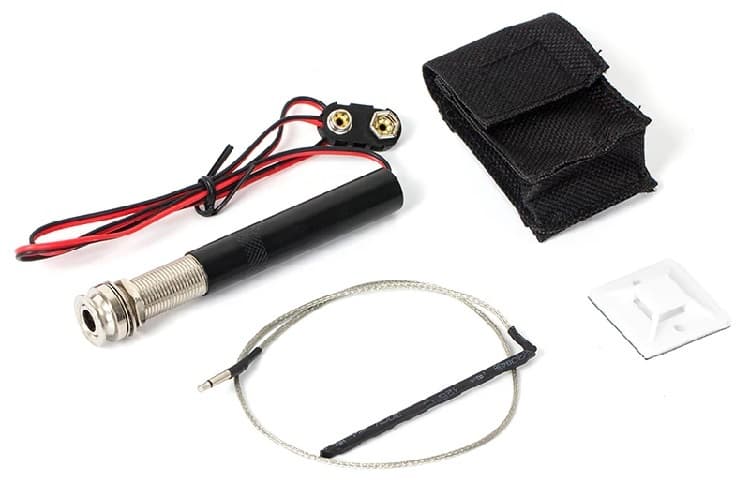
Piezo pickups do need a battery. Because they do not generate electricity like a magnetic pickup, you will need to “power” your pickup with a battery.
Most piezo pickups only require a small amount of power, with the strongest relying on a 9 volt battery for power. Some piezo pickups may use smaller batteries, and if weight or bulk are an issue for you, you will want to research the type of battery that is used in the piezo pickup that you are interested in.
There are plenty of options out there, so you should be able to find the right fit for your instrument and your needs.
Some guitarists don’t love the idea of adding a battery to their setup.
Batteries add weight, and for some people that is just too much. Electric guitars already are a bit on the heavy side for some guitarists so the added weight of a battery plus a preamp, can be a turn off for some musicians.
If you want to keep your instrument light, a magnetic pickup may be a better option for you than a piezo pickup.
However, if you are playing an acoustic guitar, you will have no other option than to use a battery powered piezo pickup with a preamp.
Can you cut a piezo pickup?
The great thing about piezo pickups is that you can modify them to fit your particular guitar.
Cutting a piezo pickup is an easy thing to do, especially if you are using the disc style piezo. Strip type piezos are bit more challenging to modify, but it is possible.
Because you don’t have magnets and electronics that you have to work around, making basic size modifications to fit your particular instrument can be done.
The reality is that all you need is a pair of very sharp scissors or wire cutters to make size modifications to a piezo pickups.
When you are making size modifications to your piezo pickup it is important that you avoid dull cutting tools.
Crushing or cracking the crystals in your piezo pickup will impact the quality of sound and basic function of the pickup.
Using very sharp scissors or wire cutters will allow you to cut the pickup’s crystals without crushing them or damaging them.
However, there are so many different piezo pickups on the market, made for a variety of different size and types of guitars that you shouldn’t need to modify a piezo pickup, if you buy the right one.
If you buy a piezo pickup, and it isn’t quite right, and you don’t feel comfortable making modifications, contact the professionals at your local guitar store.
They can help you make the necessary modifications without damaging the pickup.
Can active pickups be used as passive?

Before we talk about using active pickups as passive, it is important that we first discuss the difference between the two.
Active and passive are terms that you will hear frequently in the world of guitars.
Passive pickups and guitars are the most basic on the market.
The technology that is used to create the electrical signal from the vibration of the guitar strings is old, and is well tested. However, the volume of the signal created is small, so using a preamp is necessary when using a passive pickup or guitar.
The preamp will boost the sound, and make it louder.
The problem with passive electronics is that the use of multiple wires and coils causes a buzz or hum from the guitar.
This added noise can be distracting and is undesirable for many guitarists.
The use of the preamp is also necessary to reduce the “noise” created through the passive pickup.
Active pickups and guitars are those that have additional power that is used to create or boost the electrical signal created by your guitar.
Active guitars are not as frequently seen, but active pickups are quite common.
Active pickups are much more simple than the passive pickup.
An active pickup still uses magnets and wire coils, but fewer.
This simplicity is what makes the use of batteries and preamps a necessity for active preamps.
So, can you make an active pickup, passive?
That’s a tricky question. The best answer is, it’s not a great idea, but it can be done.
Most active pickups are powered.
They use a battery to boost the sound created by the pickup, instead of relying on an active preamp.
Your active pickup can be used as passive, if there is a mechanism to disconnect the power/battery from the pickup.
While this is possible with some pickups, and you will get the passive sound profile from your active pickup, you create other issues, when trying to use an active pickup, in a passive manner.
What is the advantage of active pickups?
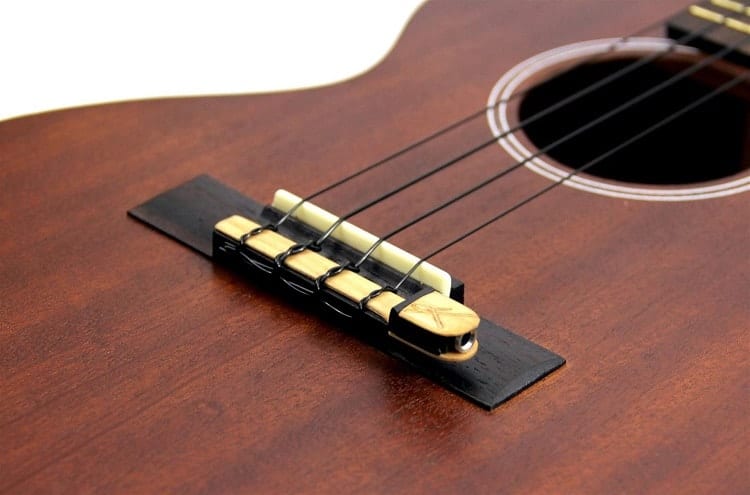
There are a few advantages to using active pickups.
They aren’t the right answer for every guitarist, however, for those that understand the benefits, and how the active pickup works, there can be a great deal of usefulness in the addition of an active pickup to your guitar.
First, because your active pickup is powered, it doesn’t necessarily require a preamp.
An active pickup creates a fairly noise free sound, that is substantial in volume, eliminating the need for an added preamp.
If you are looking for a simple guitar system, and want to reduce the amount of extras that you have to carry around, an active preamp will keep your system simple and free of unnecessary “stuff”.
Second, it is much easier to manipulate EQ and distortion using an active pickup.
Because the active pickup works directly with the controls on your electric guitar, you can easily adjust EQ and other distortion factors, using the built in knobs on your active guitar.
This can, in some cases, eliminate the need for additional pedals, and again, keeping your guitar setup simple, and free of unwanted or unnecessary equipment.
Conclusion
Piezo pickups are a great solution for creating a warm, clean sound on both your acoustic and electric guitars.
And, while the piezo pickup does need the addition of a preamp, especially on acoustic guitars, it is a more versatile choice and can work on a greater number of guitars, stringed instruments, and with a variety of string configurations.
This passive system for picking up and boosting the sound of your guitar is simple to use, easy to modify and a great solution for guitarists of all skill levels.

